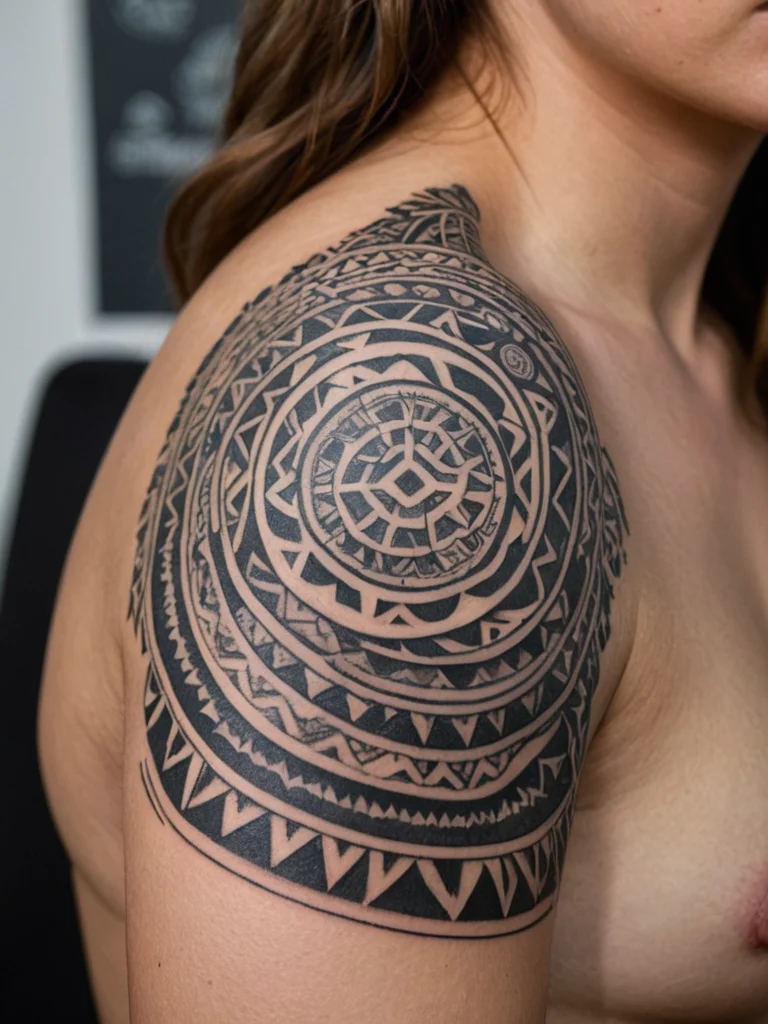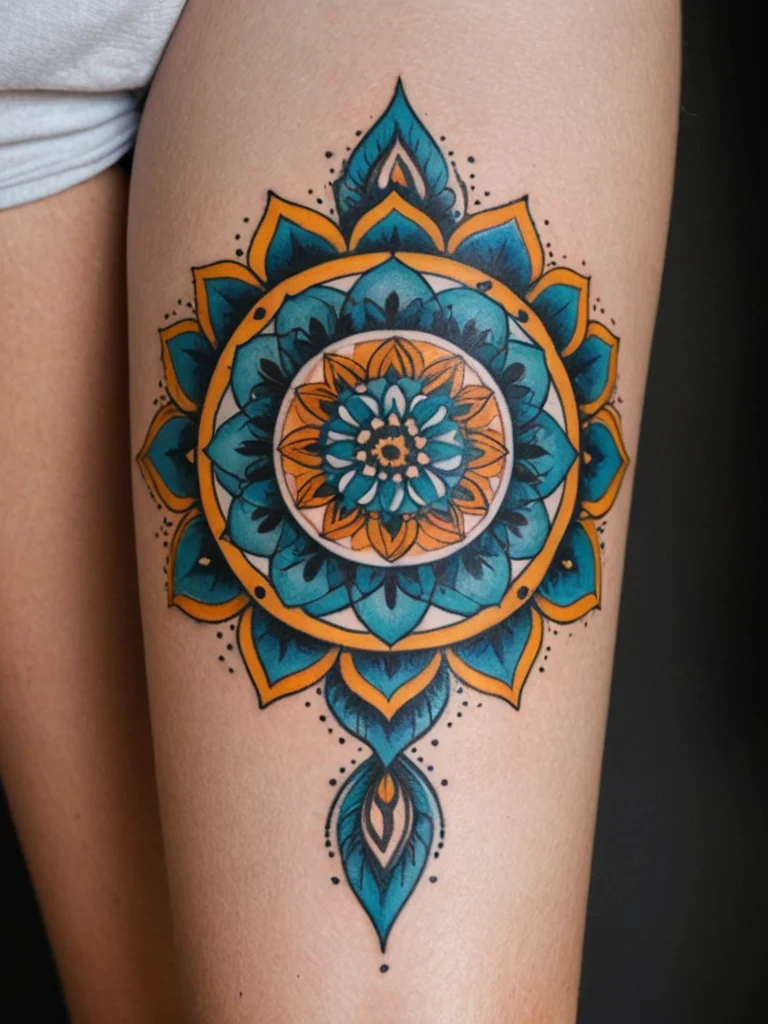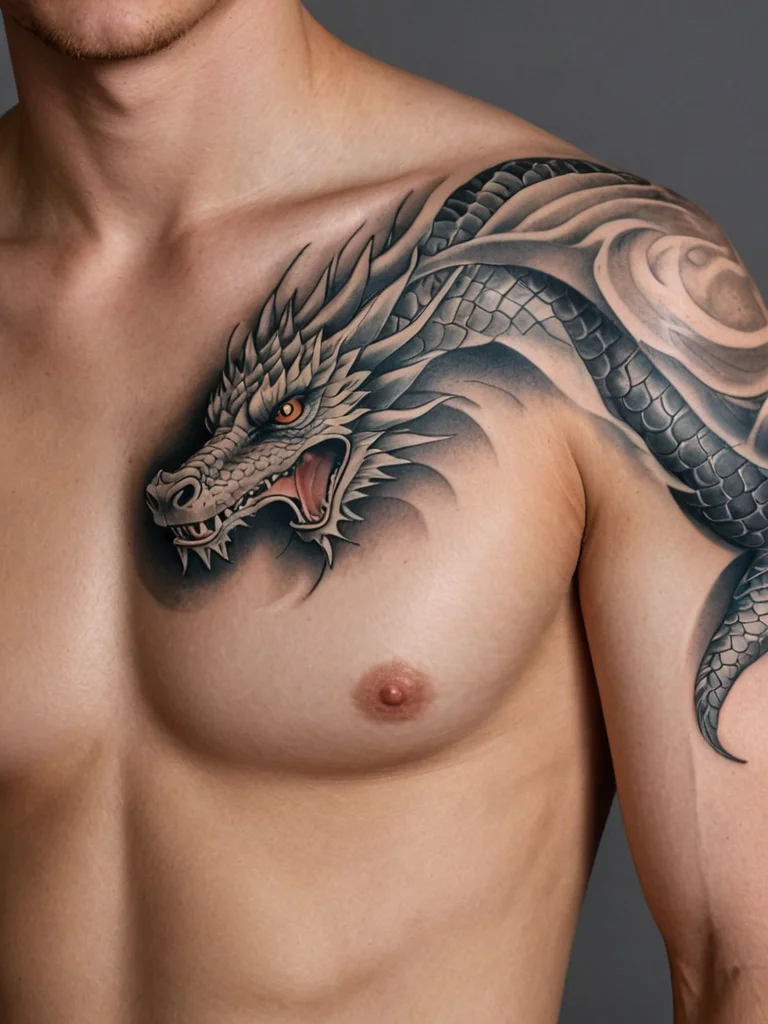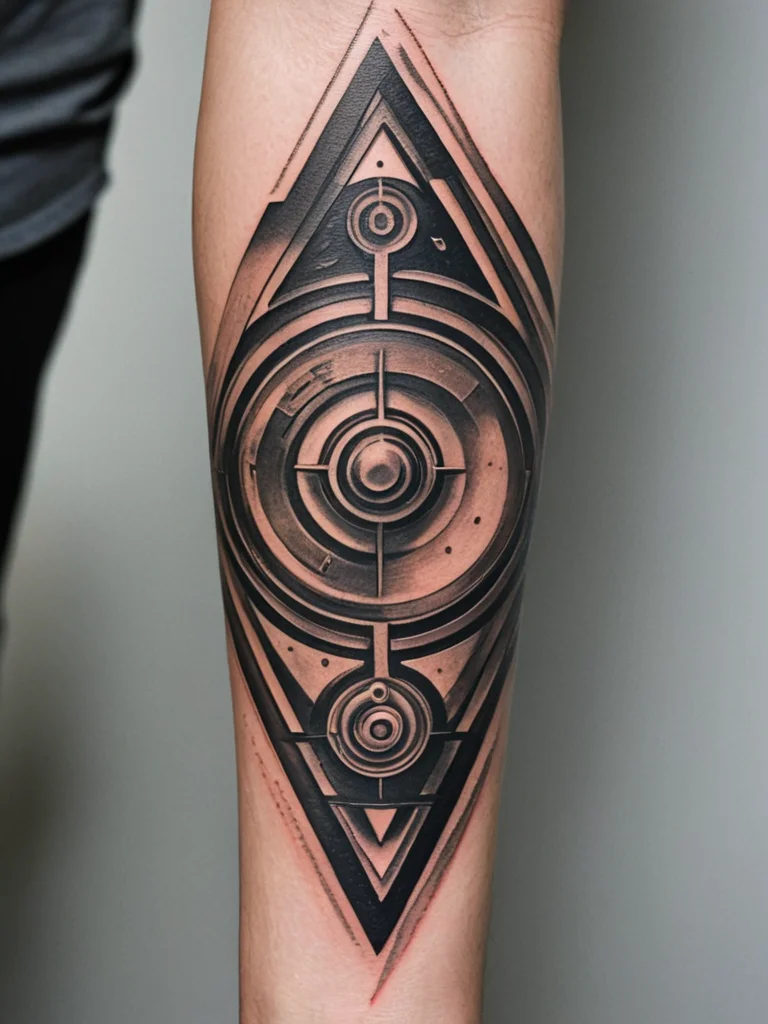The tattoo sleeve is a monumental undertaking in the world of body art, a canvas that transforms an arm into a cohesive and captivating narrative. Far more than just a collection of individual tattoos, a well-executed sleeve is a symphony of design, color, and placement, meticulously orchestrated to create a powerful visual statement. It’s an art form that requires careful planning, an understanding of composition, and a deep appreciation for how individual elements can harmoniously blend to tell a larger story. Whether you’re dreaming of a vibrant, full-color masterpiece or a subtly shaded monochrome design, the journey to an exceptional tattoo sleeve begins with understanding its fundamental principles.
Understanding tattoo sleeves: beyond just coverage

Many envision a tattoo sleeve as simply covering the entire arm with ink, a dense tapestry of designs. However, experienced tattoo artists and enthusiasts understand that a sleeve is about much more than mere coverage. It is about the deliberate composition and the intentional flow that connects diverse imagery into a unified whole. A true sleeve is a narrative that unfolds as the viewer’s eye travels across the arm, from the shoulder to the wrist, or from the elbow to the shoulder in the case of a half-sleeve. The success of a sleeve lies not just in the quality of the individual pieces but in how they interact with each other and with the natural contours of the wearer’s arm. Think of it like painting a mural on a three-dimensional, ever-moving object. The artist must consider how the design will look from all angles, how it wraps around the arm, and how it complements the body’s form. This requires a strategic approach to placement, scale, and thematic coherence. It’s about creating a visual journey that is both exciting and meaningful, a wearable work of art that is deeply personal to the individual.
Historically, the concept of extensive body adornment has existed across many cultures, serving purposes ranging from tribal identification and spiritual protection to aesthetic expression. The modern tattoo sleeve, however, as we recognize it today, has evolved significantly. It draws inspiration from traditional Japanese Irezumi, which often covers large portions of the body with intricate motifs, and from the bold designs of early American tattooing. What distinguishes the contemporary sleeve is its emphasis on a unified aesthetic and a narrative structure, often incorporating a diverse range of imagery and styles that are skillfully bridged by the artist.
The anatomy of a great sleeve: key composition principles

Crafting a compelling tattoo sleeve involves understanding several core principles of visual composition. These elements work in concert to ensure that the final piece is not only visually striking but also feels balanced and intentional. The first principle is scale. A successful sleeve will feature a variety of tattoo sizes, from large, dominant focal points to smaller, supporting elements. Large pieces, such as a bold dragon wrapping around the bicep or a detailed portrait on the shoulder, establish the main theme and anchor the design. Smaller elements, like intricate patterns, filler flowers, or thematic icons, fill the gaps and add depth. The interplay between large and small elements creates visual interest and prevents the sleeve from feeling monotonous or overcrowded.
Contrast is another crucial factor. This can manifest in various ways: contrast between light and dark values, between saturated and muted colors, or between smooth and textured elements. For instance, a sleeve might feature brightly colored floral motifs set against a darker, more muted background of traditional Japanese waves or clouds. This contrast helps to make individual elements stand out and guides the viewer’s eye through the composition. Texture can be created through different tattooing techniques, such as dotwork for softer shading or heavy blackwork for bold outlines and solid fills.
Balance is paramount. A sleeve can be symmetrical, with mirrored designs on opposing sides of the arm, or asymmetrical, creating a more dynamic and flowing feel. Asymmetrical balance is often achieved by distributing visual weight effectively across the arm. A large, dark element on one side might be balanced by a cluster of smaller, brighter elements on the other. Artists often use negative space, or un-inked areas, strategically. This ‘breathing room’ prevents the design from feeling overwhelming and allows the eye to rest, making the inked sections appear more prominent and impactful.
Furthermore, focal points are essential. Every well-composed sleeve needs one or more areas that immediately draw the viewer’s attention. These are often the largest or most detailed elements, or those rendered with the most striking colors or contrast. Think of a beautifully rendered eagle head on the shoulder or a complex clock face on the forearm. Surrounding these focal points, secondary and tertiary elements build the narrative and lead the eye around the sleeve. The placement of these focal points should consider the natural anatomy of the arm – the curve of the elbow, the swell of the bicep, the taper of the forearm – to enhance the visual appeal and create a dynamic interaction with the body’s form.
Achieving seamless flow: connecting different designs and styles

The true magic of a tattoo sleeve lies in its ability to connect disparate elements into a cohesive narrative. This is achieved through careful consideration of flow. Flow refers to how the eye moves naturally across the tattooed surface, guided by the lines, shapes, and colors of the design. Artists employ several techniques to create this seamless transition.
One primary method is the use of background elements and filler. These are the unifying components that often occupy the spaces between larger, more defined tattoos. Common background elements include swirling patterns, tribal motifs, geometric shapes, ornamental designs, or abstract color washes. For example, a sleeve might feature several distinct imagery pieces – a portrait, a skull, a rose – but these are all interconnected by wisps of smoke, flowing water, or decorative filigree that wraps around the arm. These fillers not only bridge gaps but also add depth and texture, making the entire arm appear as one continuous artwork. Historically, traditional Japanese tattoos often use clouds, waves, or wind patterns as background filler to unify diverse imagery like dragons, koi fish, and deities.
Color palette and tonal consistency also play a vital role in creating flow. If a sleeve incorporates multiple distinct designs, maintaining a consistent or complementary color scheme helps to tie them together. For instance, a sleeve might combine elements from different styles, like neo-traditional flowers and black and grey portraits. By using a similar tonal range or a limited, harmonious color palette, the artist can ensure that these diverse elements feel like part of the same artistic vision. A consistent application of shading techniques can also contribute to a unified feel, even if the subject matter varies greatly.
Line weight and direction are subtle yet powerful tools for guiding the eye. The artist can use bold outlines to define major elements and thinner lines for secondary details or background patterns. The direction of lines – whether they are curved, straight, or follow the musculature of the arm – can also influence the perceived flow. For example, curving lines can emphasize the natural shape of the limb, making the tattoo feel more integrated with the body. The repetition of certain shapes or motifs throughout the sleeve can also create a sense of rhythm and connection, reinforcing the overall theme.
Finally, transition zones are carefully managed. Areas where different styles or themes might meet, such as the transition from a detailed portrait to a graphic tribal design, require skillful blending. Artists might use gradients, subtle shading, or connecting imagery to smooth these transitions, ensuring there are no jarring visual breaks. The goal is for the eye to move effortlessly from one element to the next, appreciating the diversity while recognizing the overarching unity.
Choosing your sleeve narrative: from full sleeves to half sleeves

Deciding on the scope of your tattoo sleeve is a fundamental step in the planning process. The term ‘sleeve’ can encompass a range of coverage, from the full arm to more localized sections. Understanding these variations helps you define your artistic vision and consider how much of your body you wish to dedicate to this form of expression.
A full sleeve covers the entire arm, from the shoulder to the wrist. This offers the largest canvas and the greatest potential for complexity and narrative depth. Full sleeves are often ambitious projects, requiring multiple sessions and a cohesive thematic concept that can be explored across the entire limb. They are ideal for intricate storytelling, elaborate imagery, or creating a dramatic, all-encompassing visual statement. The planning for a full sleeve is extensive, often involving detailed consultations to map out how different images will interact and flow from top to bottom.
A half sleeve typically covers the area from the shoulder to the elbow, or from the elbow to the wrist. These are excellent options for those who want a significant tattoo without committing to full arm coverage. A shoulder-to-elbow half sleeve is often chosen for its visual impact, as it incorporates the broader curves of the shoulder and bicep, making a strong statement. An elbow-to-wrist half sleeve is also popular, offering a substantial area for detailed work that is easily visible. Both types of half sleeves can be designed to stand alone or to potentially connect with other tattoos on the shoulder or chest, or further down the arm, allowing for future expansion.
Beyond these, there are also ¾ sleeves, which extend from the shoulder to just above the elbow, or from the shoulder past the elbow to mid-forearm. These offer a compromise, providing more coverage than a half sleeve but leaving a section of the arm intentionally un-inked, perhaps for personal preference or to create a specific visual break. Another variation is the short sleeve, which might cover only the upper arm, from the shoulder to about halfway down the bicep.
The choice of coverage will significantly influence the types of designs that work best and how the composition can be structured. A full sleeve allows for a grander, more expansive narrative, while a half sleeve might focus on a more contained theme or a powerful central image. Consider your lifestyle, your personal aesthetic, and how much of your body you want to display your art on when making this decision. It’s also worth noting that many sleeves are built over time, starting with smaller pieces and gradually connecting them into a larger, cohesive artwork.
From idea to ink: planning and collaborating on your sleeve masterpiece

Embarking on the creation of a tattoo sleeve is a journey that demands thoughtful planning and close collaboration between you and your chosen tattoo artist. It’s a partnership where your vision meets their expertise to create something truly unique and enduring. The initial consultation is arguably the most critical phase. During this meeting, you’ll discuss your ideas, inspirations, preferred styles, color palettes, and the overall theme or narrative you wish to convey. Bring reference images – these can be anything from other tattoos you admire to artwork, photographs, or even natural landscapes that inspire you. The more information you can provide, the better the artist can understand your aesthetic and translate it into tattoo form.
Your chosen artist will then begin the process of designing your sleeve. This often involves creating preliminary sketches that will be refined based on your feedback. Be prepared to offer constructive criticism. For instance, you might like the placement of an element but feel it needs to be larger, or you might suggest a different color for a specific detail. Remember, the artist is the expert in how designs translate to skin, so their advice on factors like color saturation, line work durability, and how elements will wrap around the arm is invaluable. Trust their professional judgment, but also ensure the final design resonates deeply with you.
Sourcing the right artist is paramount. Look for artists who specialize in the style you desire – whether it’s realism, neo-traditional, Japanese, black and grey, or a mix of styles. Review their portfolios carefully. Do they have examples of sleeves they’ve completed? Do these sleeves demonstrate the composition and flow principles discussed earlier? Consider their communication style. A good artist will be communicative, patient, and willing to work with you to achieve the best possible outcome. Don’t hesitate to consult with multiple artists before making a final decision.
Patience and commitment are essential virtues when getting a sleeve. These are large-scale projects that can take many hours and multiple sessions to complete. Be prepared for the time commitment, both for the tattooing process itself and for the healing between sessions. Proper aftercare for each session is crucial for ensuring the longevity and vibrancy of your tattoo. Follow your artist’s instructions diligently to allow your skin to heal properly and to maintain the integrity of the artwork.
Ultimately, a tattoo sleeve is more than just ink on skin; it’s a deeply personal expression of identity, passion, and artistry. By understanding the principles of composition and flow, choosing the right scope, and collaborating effectively with a skilled artist, you can create a wearable masterpiece that you will cherish for a lifetime. It’s a testament to the power of art to transform the human form and tell stories that resonate with the soul.